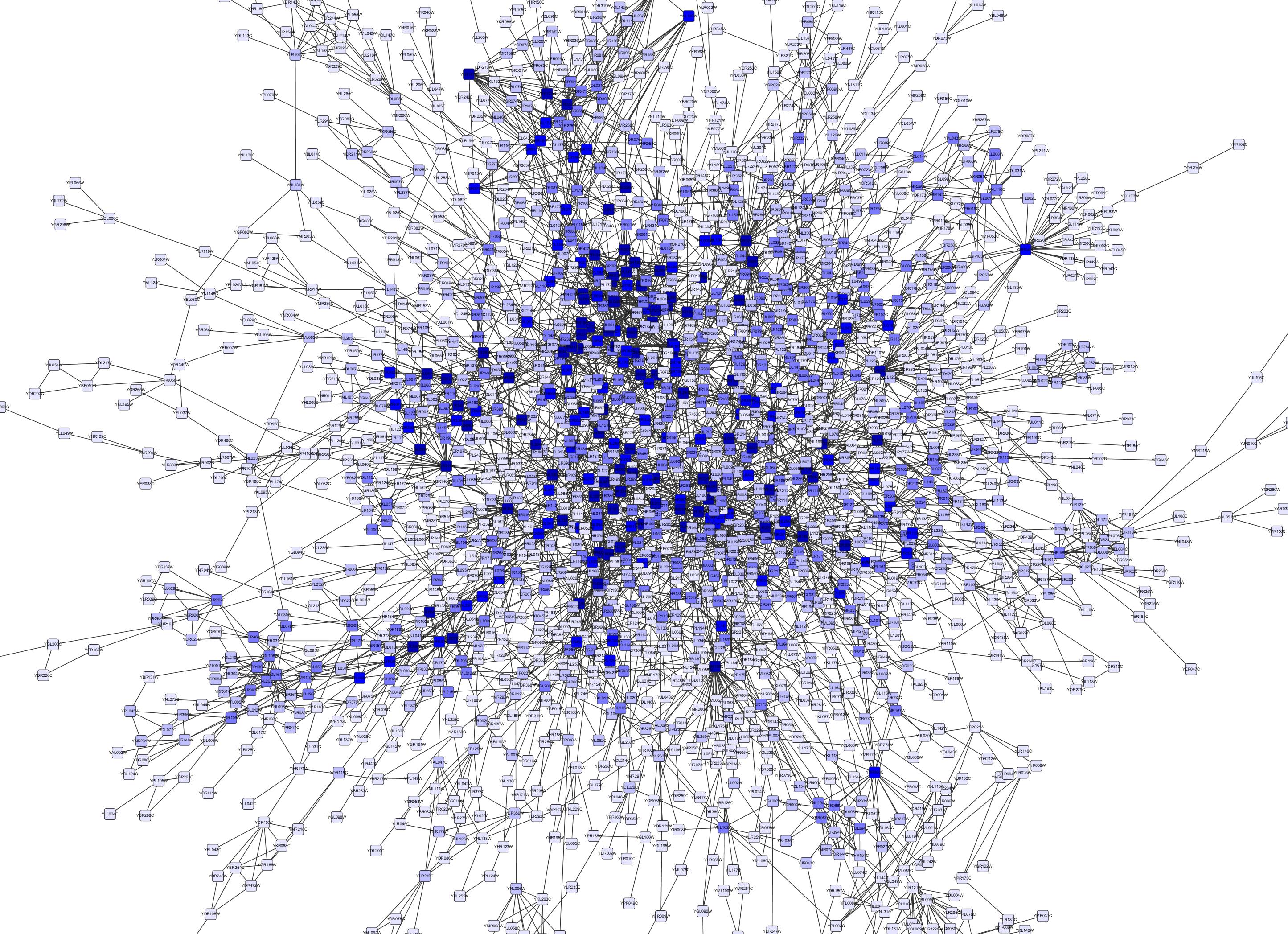

If the chart is in its interactive mode, you can see the main graph view changing its selection as the chart changes. To clear the selection, click outside of the range. To edit an existing selection, drag in the middle of the selection to move the entire selection, or on either edge of the selection to edit just the start or end of the range. You should see a color change in the background of the data. To select a range within a histogram, click and drag left or right.

The structure of the c圜hart window has a header with common functions and settings, the content of the chart, and a footer with the selections status and the controls to set the axes. To create a histogram using c圜hart, open the right-click on the header of a numeric column in the Node or Edge Table, and select the command Plot Histogram… This can be particularly useful for finding pockets of the data that express similar ranges, such as positively and negatively expressed genes. It shows the user where the most common values are and whether the values are distributed uniformly (flat line), normally (the bell curve) or have strong modes (hills and valleys). The file format is simply oneĪ histogram shows the distribution of a variable in bins over a range. Select → Nodes → From ID List File… selects nodes based on node Select → Mouse Drag Selects includes the same options for Selection Modeįor mouse click or drag-selection as the current Selection Mode in the Network Select all (nodes, edges and annotations)ĭeselect all (nodes, edges and annotations) Regardless of which Selection Mode for mouse click or drag-selection. Most options are fairlyĪ set of keyboard shortcuts for selecting nodes, edgesĪnd annotations are also available. Mechanisms for selecting nodes and edges. The Select → Nodes and Select → Edges menus provide several To search for column values that contain special characters you need toĮscape those characters using a \. Letters and numbers currently do not work when searching a specificĬolumn. If you don’t specify a particular column, all columnsĬolumns with names that contain spaces, quotes, or characters other than That have a COMMON column value that starts with STE, useĬommon:ste*. To search a specific column, you can prefix your search term with theĬolumn name followed by a. Ste? would match STE2 but would not match STE12. Zero or more characters, while ? matches exactly one character. The * is a wildcard character that matches For example, to select nodes or edges with aĬolumn value that starts with STE, type ste* in the search bar. window.You can search for nodes and edges by column value directly throughĬytoscape’s tool bar. You can find a link to a runnable example above. I am curious whether the above can be achieved with a particular layout or must be handled manually. As for klay and elk layouts they doesn't seem to have as good layout as dagre. Can we specify a order for parent nodes in the same rank? For example I want node5 and node7 along with their compound nodes to be on the top ? I am not sure whether this is supported by the dagre layout.I want to avoid compound nodes overlapping and at the same time have a smaller separation in the compound node. If I set a smaller separation for all the nodes, then the compound nodes will be overlapped. I have a header and footer svg specified in the compound node and can have multiple nodes from the same rank. Can we specify a smaller separation for nodes in a compound node ? The separation between adjacent nodes in the same rank is the same for nodes no matter whether they are in compound nodes.Can they be left-aligned according to the node with the largest width? Nodes in each rank/hierarchy level/ are center aligned.You can check actual and expected snapshots and examine a runnable sample here. I have a couple of questions regarding the layout. I am using Cytoscape.js with dagre layout in order to visualize a tree like hierarchy.


 0 kommentar(er)
0 kommentar(er)
